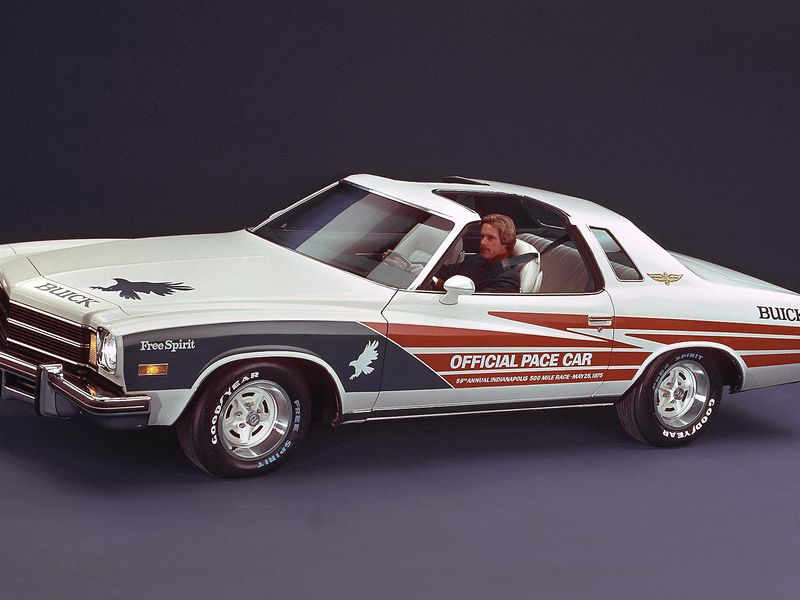
Buick’s lineup of midsize Century coupes, sedans and station wagons — downsized in 1973 from full-size models — proved versatile during the 1970s, when oil shocks and government regulations forced automakers to adopt smaller engines and bodies.
The car proved its mettle when Buick, for only the third time, served as the official pace car of the Indianapolis 500 on May 25, 1975, with the Century coupe.
The 1975 coupe was based on General Motors’ rear-wheel-drive A-body platform, which was a monster seller for the company. The A-body Oldsmobile Cutlass, for example, was America’s top-selling car in 1976. A-body stablemates included the Chevrolet Malibu, Monte Carlo, El Camino and Chevelle; the Pontiac Grand Prix, Grand Am and LeMans; and several others.
One magazine described the Century as having mild sporting pretensions, but the car received a major lift when it was chosen to pace the Indy 500.
The Buick provided for formal pace car duties for the 59th running of the annual race wasn’t your typical showroom car. It was equipped with a beefed-up 7.5-liter, 455-cubic V-8 engine, a dual exhaust and heavy-duty suspension. The red, white and blue graphics, created by a young GM designer, Gary Smith, were a nod to the nation’s upcoming bicentennial.
Buick introduced a 1975 Buick Century “Free Spirit” replica based on the Indy pace car for the public, also with patriotic graphic decals and the Buick Hawk on the hood. The car was equipped with a transmission shifter on the floor with bucket seats and “Hurst Hatch” T-tops. The engine was a 350 V-8, as opposed to the bigger V-8 used on the pace car.
Actor James Garner was the official pace car driver, and Bobby Unser won his second Indy 500 in 1975, this one shortened by rain and concluded under a red flag after 174 laps or 435 miles. Unser’s average speed was 149.123 mph.
The Indianapolis Motor Speedway was so impressed with the Century’s performance that Buick was invited to again pace the race in 1976 with a turbocharged Century V-6.
A Buick first served as the Indy 500 pace car in 1939, a Roadmaster, and last provided the pace car in 1983 — the Riviera convertible — for a total of six turns setting the pace around the Brickyard.
The Century’s turn to pace the Indy 500 seems fitting, since the nameplate was originally conceived in 1938 to denote speed. The first Century got its name because its straight-eight, 120-hp engine could deliver comfortable 100 mph performance. That original Century also was one of the first GM cars to pioneer a formula that would be instrumental in powering GM’s sales in the muscle car era: placing a powerful engine from a large car into a midsize car — exactly what John DeLorean did when he stuffed a 389-cubic-inch V-8 engine into a midsize Tempest in 1964 and created the Pontiac GTO.

